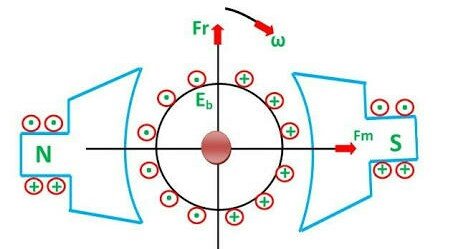WONDERS OF ELECTRIC ENERGY

Electricity is defined by Wikipedia as the presence and flow of electric charge. As a flow of energy, electricity comes in positive and negative forms. Electric energy exists naturally in lightning and is produced by man in generators.
When the electric charges are not moving, the electricity is called static electricity often produced by friction between two sedentary materials which touch each other (eg wool cap and plastic ruler). It is static electricity which causes two objects in contact to stick together. When charges are moving we experience electric current also called dynamic electricity.
Electricity can be created if a magnet rubs on a metal wire, a method employed in the construction of generators. Combining chemicals in a jar with two different kinds of metal rods produces electricity and this method is used for producing battery. Energy from the sun can be trapped to create electricity as in photovoltaic cells.
Electricity serves great purposes in the homes for electric lamps, washing machines, electric cookers and in factories for power machines. Telephones, computers and televisions are powered by electricity.
Power stations are where electricity is made by a process called electromagnetic induction which Michael Faraday discovered. At power stations water is boiled into a powerful steam which is capable to turn a steam engine. The steam engine’s turbine turns a machine called ‘generator.’ Coiled wires inside this generator are made to spin in a magnetic field, resulting in the flow of electric current through the wires. There are two types of electric charges that push and pull on each if they are not touching; these two charges are positive charges (called protons)and negative charges (called electrons).
A material which allows electrons to move around is called a conductor ( e.g. copper, aluminium, silver and gold) while material that holds electrons tightly in place disallowing them to move is called an insulator (e.g. rubber, plastic and wood). If both ends of a piece of conductor wire are connected to the two ends ***(the electrodes) of a battery the loop that is made is called electrical circuit. It produces electric field inside the conductor, leading electrons to move in a definite direction. It is notable that touching a live wire when electric current is moving is disastrous. Hence, live wires are often wrapped in insulators such as rubbers.
An electric field is a region of space where a charged body experience an electric force. An electric field is an example of a force field. It is a vector quantity because it has both magnitude and direction.
Electric current is the rate of flow of charges in a conductor. It is measured in Amperes. It is expressed by a formula:
Current = quantity of charge (Q)/time (t)
Quantity of charge is measured in coulomb while time is measured in seconds.
The electric circuit is the path provided for the flow of electric current. The circuit consists of the source of electric energy (battery) connected through a conductor (e.g. wire) to a load (e.g. an electric bulb) and a key or switch. An electric circuit consists of a closed circuit, open circuit and a short circuit.
A closed circuit is a circuit in which there is no gap in the conducting path. In this circuit the current flow through an external resistor and a bulb.
An open circuit is a circuit with a gap in the conducting path. Here, the battery maintains no current in an external resistor and the bulb does not light up.

The potential difference between two points in an electric field is defined as the work done in moving a positive charge of one coulomb from one point in the electric field to another. It is measured in volts. The electromotive force (e.m.f.) is the total work done in driving one coulomb of electricity round a circuit. It is expressed as:
E.M.F = Work (W) / Charge (Q)
It is measured in volts. The e. m. f of a cell is defined as the potential difference between two terminals of a cell when it is not delivering any current to the external circuit. Resistance can be defined as the opposition to the flow of charges (electron). It is measured in ohms. Resistor can be connected in series or in parallel.
Series Connection
When resistors are connected in series, the equivalent resistance of the combination is given as R = R1 + R2 + R3
Parallel Connection
When resistors are connected in parallel, the equivalent resistance (R) is given as;
1/R = 1/R1 + 1/R2 + 1/R3
Example :
Three resistors of resistance 1 ohm, 2 ohms and 4 ohms are connected in series. Find the equivalent resistance of the combination.
Solution:
R = R1 + R2 + R3
R= 1 + 2 + 4 = 7 ohms

Acknowledgements:
-M. W. ANYAKOHA
-Wikipedia
The facts of electric energy are exciting.
Congratulations @missglory! You have completed some achievement on Steemit and have been rewarded with new badge(s) :
Click on any badge to view your own Board of Honor on SteemitBoard.
For more information about SteemitBoard, click here
If you no longer want to receive notifications, reply to this comment with the word
STOP